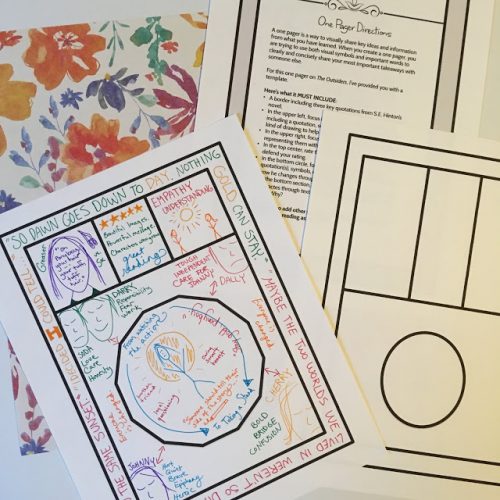One-Pagers for the Art-Phobic
What is a One-Pager?
One-pagers are becoming increasingly popular as a way to help students process what they have read in one powerful activity. Like sketchnotes, they combine visuals with text to make ideas come alive in students’ minds and memories.
One-pagers have got it all. They help students think critically and creatively. They give teachers a quick assessment option, and give students a colorful, memorable result. What’s more, there are just so many ways you can use one-pagers to help your students connect to your class materials.
As wonderful as they are, it’s easy for students to struggle with one-pagers if they are not naturally inclined toward art and have not previously been encouraged to represent their ideas this way. They may feel they are being graded unfairly on their artistic abilities.
Some students will hear directions to create a graphic representation of a reading and dive right in. Others will moan and mutter things about “ridiculous art projects.” But the popularity of one pagers with teachers lately is undeniable. If students can get over their hang-ups, they really learn a lot from processing what they’ve read in visual form with a one-pager.
So how to help the art-haters thrive alongside the artists? How to show everyone that their one-pagers are about critical thinking and interpretation, not just flair pens (though flair pens are a pretty fabulous addition)?
- A border which somehow represents the key themes from what you have read
- An image in the upper left hand corner with a quotation woven into or around it. This image should somehow represent what you consider to be the most important symbol in the text so far.
- Images and/or doodled words in the upper right hand corner that represent the key characters from the text and perhaps how they are changing
- Images and quotations in the lower left hand corner that show the author’s style of writing, and the power of the language that is used
- Images and/or words in the bottom right hand corner that show connections between the themes and ideas in the writing and what is going on in the world today.
- Three important quotations from the text
- Words and/or images that show the significance of the setting in some way
The rest of this page will take you on a tour of options for how to use templated one-pagers. You’ll find links to the templates that I have designed for each type of one-pager assignment, or you can use the ideas to create assignments of your own.
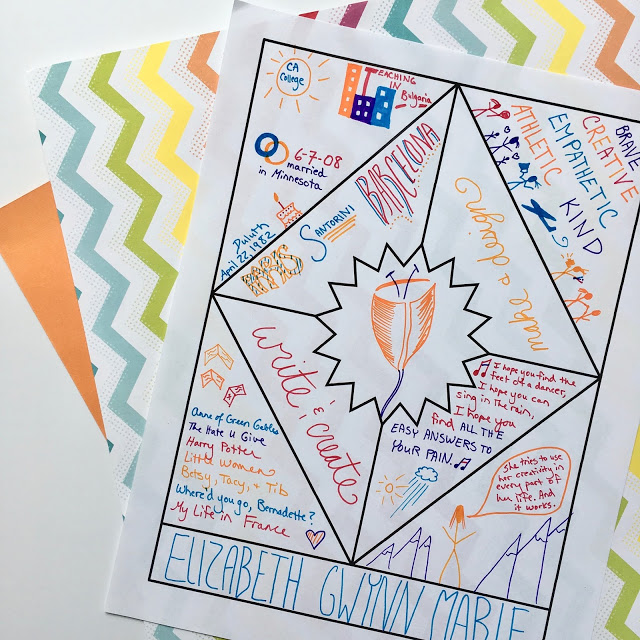
Potash, Betsy. “One-Pagers: The Simplest Way to Success.” Spark Creativity, 15 February 2018, http://www.nowsparkcreativity.com/2018/ 02/one-pagers-simplest-way-to-success.html _________________________________________ Potash, Betsy. “One Page of What? 8 Creative Ways to Use One-Pagers.” Spark Creativity, 14 October 2018, http://www.nowsparkcreativity.com/2018/ 10/one-page-of-what-8-creative-ways-to-use.html.
One-Pagers for Novels
One-pagers for novels ask students to show the most important parts of what they’ve read. You can ask them to include just about anything, but I like to focus in on character development, themes, author’s style, key quotations, and connections between the text and our modern world. You can use these as an assessment for literature circles, independent reading, or whole class novels.
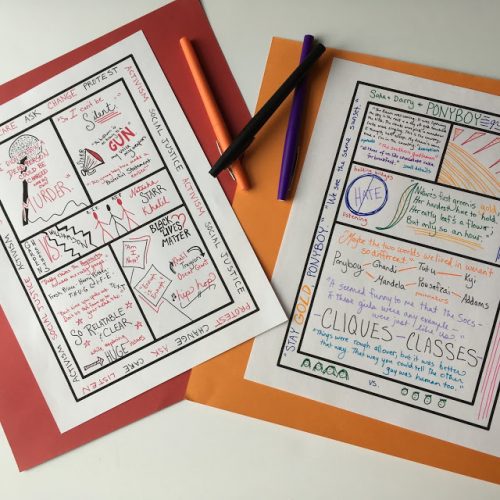
One-Pagers for Identity/Autobiography Units
This templated one-pager asks students to represent their life history and personal qualities. It’s a great way to help them reflect on their identities when doing a unit on identity in literature or getting ready to write autobiographies.
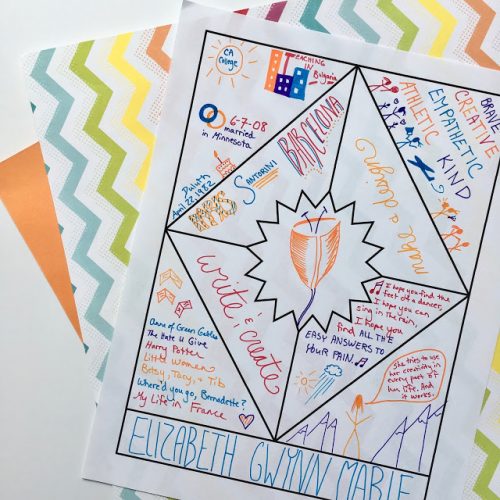
One-Pagers for Films
There are so many reasons why watching a video might be useful in class, but it’s nice to have some way to keep students focused as they watch.
Whether you’re building up to video analysis, using it to introduce new themes, or letting students compare it to what they’ve read, using a one-pager template to keep them paying attention helps!
You can write the prompts for each section of the template specifically to relate to what you want them to take away from it, or you keep them on track with my One-Pager for Any Film Activity.
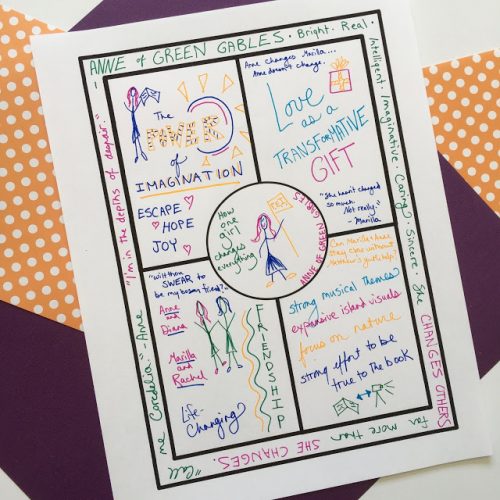
One-Pagers for Podcasts
Podcasts are all the rage these days. There are a lot of great ones to listen to in class, to go with the themes of a unit, to practice analysis, or to jumpstart discussions.
But there’s always the question, what the heck should everyone be doing while they listen? Staring off into space and doodling aren’t great options.
Podcast one-pagers present an easy solution. Students sketchnote their most important takeaways as they listen. Again, you can create podcast-specific prompts, asking students to capture key quotations, themes and ideas from your episode, or guide students using this general template.
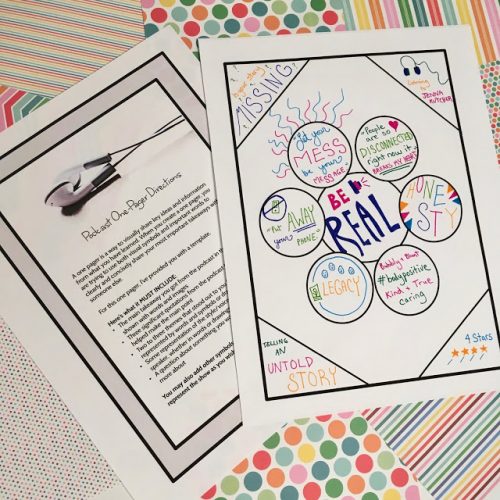
One-Pagers for Vocab Sketchnotes
Teaching vocabulary isn’t easy. It’s hard to come up with a lot of fresh and creative ways to help students memorize words.
One of my favorite ways is to have students respond to funny videos with writing prompts that ask them to include vocabulary words. Another of my favorites is to use vocabulary one-pagers.
Especially if you’ve already introduced them to one-pagers with one of the other types of templates, they will have a clear idea of how to combine doodles, images, and words to demonstrate the meaning of their vocabulary. Create your own templates or find mine here.
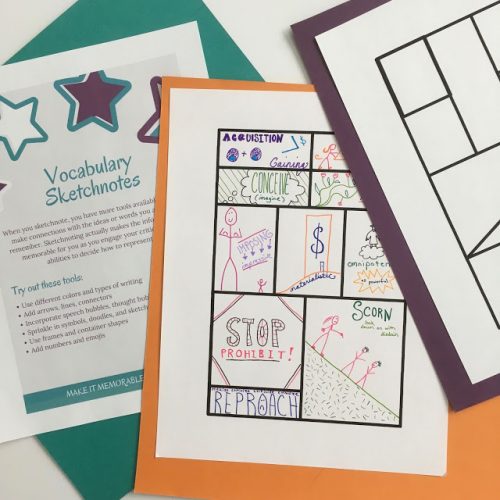
One-Pagers for Name Tents
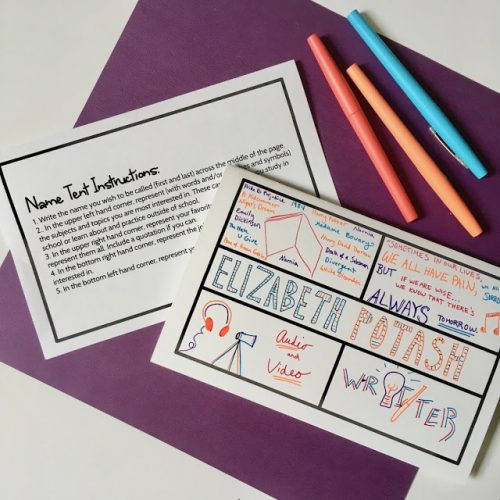
One-Pagers for Reading Profiles
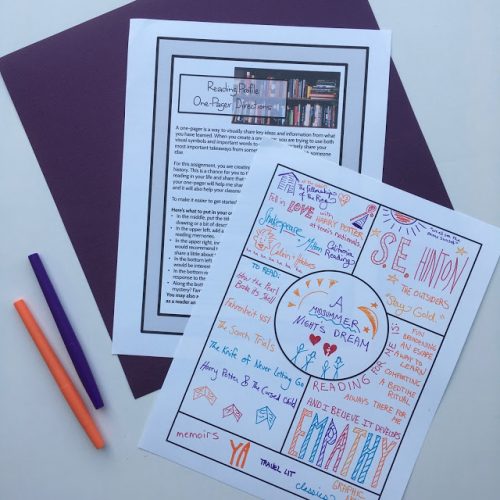
One-Pagers for Novels
